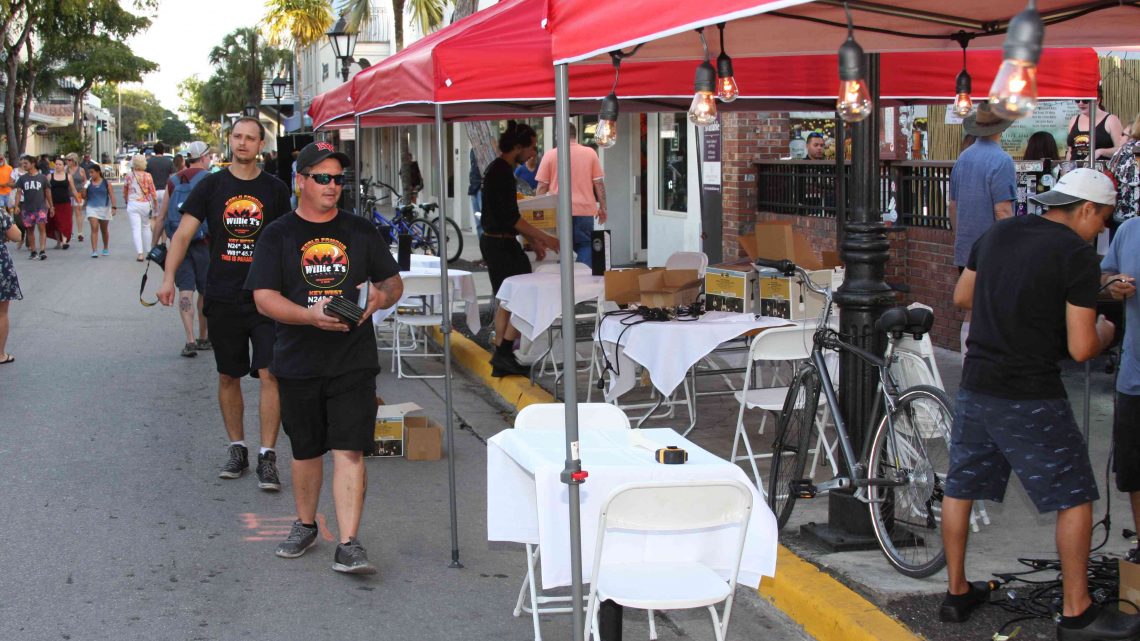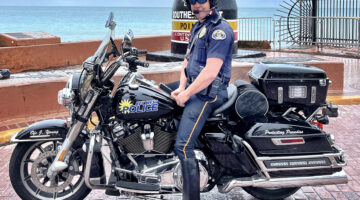Mall on Duval city funding to end Oct. 1
BY PRU SOWERS
KONK LIFE STAFF WRITER
While there have been largely positive reviews of the Mall on Duval, a pilot program that turns three central blocks of Duval Street into a pedestrian-only roadway on weekend evenings, the question of how much it actually costs taxpayers has been contentious.
City Commissioner Billy Wardlow refused to let a vote go forward to extend the Mall pilot program past July 31 without that financial information, forcing Mall organizers to scramble to make adjustments to street closures this weekend in order to keep the Mall open.
“We don’t even know what it’s costing us,” Wardlow said, pulling the pilot extension resolution off the July 16 agenda. “We’ve got police cars down there running seven hours a day.”

Duval Street Mall
Since the Mall opened on February 17, the city has picked up the tab for police, fire, code enforcement and public works staff to set up, break down and watch over the pedestrian program, which closes the 500, 600 and 700 blocks of Duval to traffic from 5 pm to midnight on Friday, Saturday and Sunday evenings, allowing area businesses to spill onto the streets and sidewalks. Since its inception, the Mall pilot program has been extended once and the hours expanded to begin at 2 pm on those three days of the week. And spurred by positive reception from locals and tourists, there is now talk of extending the Mall to 24 hours a day, seven days a week, creating a permanent traffic-free oasis in the middle of the city’s busiest commercial roadway.
But it has been difficult to track the exact out-of-pocket cost to the city because expenses have dropped significantly since the pilot began, as officials became better able to gage the manpower needed to service the Mall. From Feb. 17 to May 12, the city spent $143,125, including $22,110 the first weekend. But by May 12, that weekly figure had dropped to $6,500, with the personnel hours for police, fire, code and public works reduced by approximately two-thirds.
“We didn’t know what to expect,” Mayor Teri Johnston said about the first few weekends the Mall was open, where safety and public works teams were fully staffed to service the program. “We had everything.”
Now, according to city Budget Director Mark Finigan, the weekend cost is down to $4,600, with the city having spent upwards of $200,000 from the Feb. 17 opening to the end of July. Many of the businesses along those three blocks of Duval have reported strong sales increases, leading some residents and officials to complain that taxpayers are effectively footing the bill to boost business revenues along that corridor.
As a result, Finigan said he has been directed not to include any funding for the Mall in the Fiscal Year 2020 budget, which begins Oct. 1. And while weekend costs are expected to fall even further once traffic bollards have been installed in the intersections of the three-block Mall, eliminating the need for extra police officers to direct traffic, there will still be a weekly cost between $800 and $900, Finigan said.
“The only two folks needed going forward [after the bollard installation] will be two public works employees to set up and take down the bollards and police the area after the Mall closes,” he said.
So, who is going to pay the ongoing costs, assuming the Mall pilot program is extended again, this time to February 2020? According to city officials, business and property owners along the three-block Mall.
“It’s either going to make it on its own – and every indication is that it will – or it’s not,” said Mayor Johnston. “After our pilot period, this is going to have to fly on its own.”
Business owners are preparing to kick in more money. But the private funding options are not set up yet. Carl Fischer, President of the Central Duval District (CDD), a business organization representing the area surrounding the three Duval blocks that make up the Mall, is looking at city funding lasting until the end of the pilot program, which, if approved by city commissioners, will extend to Feb. 17 next year. But there will be no money in the city’s new fiscal budget for Mall expenses starting on Oct. 1.
Fischer said Mall business owners have ponied up $21,600 so far to cover marketing, advertising and event costs. While not committing to taking over the bill post-Oct. 1, Fischer said the CDD has discussed the possibility of creating a special tax district for the central area, where business property owners would pay higher taxes to reimburse the city for any Mall-related costs.
But mostly, the CDD is focusing on continuing to reduce the weekly costs, which, if Finigan’s budget estimates are correct, will still total approximately $45,000 to $50,000 a year for the two public works employees.
“When the bollards are in, there’s no need to have those police cars and associated officers there. The only cost then is community services coming in a few hours a night to pick things up,” Fischer said, adding, “That takes us a long way to our self-sufficiency, which is important to the citizens and to us.”
The city commission is scheduled to take up the Mall extension again at its Aug. 6 meeting.
[livemarket market_name="KONK Life LiveMarket" limit=3 category=“” show_signup=0 show_more=0]


How much are here bollards costing?